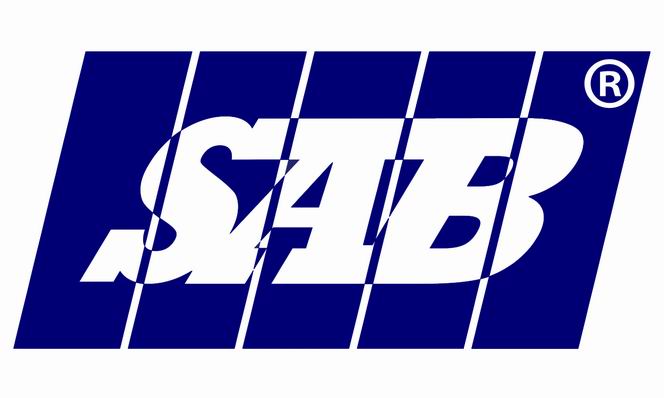3.
5. Step#7: screed casting. Step#8: screed softening by the helicopter. Step#9: skirting , SIZE: 25cmx25cm. Step#10: Removing the flexible sheets. Step#11: filling the expansion joints by: sponge then mastic. Step#12: Acrylic applicati on (top coat) .
7.
10. Step# 9 : Water testing. . Step# 10 : Ridges execution . Step# 11 screed casting step #12 : screed softening by the helicopter. Step # 13 step # 14 : filling the expansion joints by: sponge then mastic.
8. SAB ® insulation Methodology Clarification, (supported by SAB ® archive photos). Step#1: Roof preparation, threshold placement. Step#2: Roof preparation, parapet A/C pipes. Step#3: Roof preparation, middle A/C pipes. Step#4: Roof preparation, electrical conductors are well sealed.
4. SAB ® insulation Methodology Clarification, (supported by SAB ® archive photos). Step#2: polyurethane application. Step #1: Roof preparation. Step#3: Cold Rubbrize application. Step#4: Water testing. Step#5: Separation layers application. Step#6: Ridges execution.
9. Step#5: slop corners 20x20 cm along with the parapet . Step#6: Cavity 1.5x1.5 cm execution along the parapet . SAB ® insulation Methodology Clarification, (supported by SAB ® archive photos). Step# 7 : applying cold bituminous primer . Step# 8 : Install one layer APP elastomeric membrane .
11. STANDARD SPECIFICATIONS ACCORDING TO SAB ® INSULATION SYSTEMS: C. SAB ® Roof Insulation System/ Balconies, Kitchens, and Toilets. Recommendations: 1. Water pipes should be placed in place and minimally on height 4 cm. 2. Water pipelines should be installed very carefully above insulation layers, without causing any damages or vandalism. 3. Wet area insulation layers must be implemented, when all ceramic (walls) installation has been completed. How to implement wet area insulation layers: 1. A s a preparation for perfect result these procedure must be taken into consideration: Cleaning the surface properly and make sure the surface is free of dust or debris as well as ground settlement. 2. Execute slope corners 20cm * 20cm. 3. Applying 2 layers of SAB ® Creet. 4. Water testing should be by using sweet water ,for 24 - 48 hours, this water test will give high opportunity to discover any leakage might be happen, either it was due to manufacturing defect or poor quality materials,( this procedure should be on the main contractor responsibility, and under consultant engineer supervision) . 5. Upon completion from all waterproofing works and installing water pipes on its places, as a precautionary action form any further leakage or vandalism , all insulation material s must be covered by sand / 03 which will be used during ceramic execution. 6. We do recommend and advise ceramic applicators to use flexible and water resistance mortar properly while installing ceramic (floor) and the tub, these materials would support an d complement our works. SAB ® Roof guarantee is valid for 5 years.
1. OPTIMISATION METHODOLOGY TO IMPLEMENT THERMAL & MOISTURE INSULATION The Contractor is referred to the Specifications and Drawings for all details that is related to this Section of the Works, in order to insure full commitment with all the requirements contained therein, thus the thermal & moisture insulation will reach to the required professionalism and effectiveness. Perquisites required from Main Contractor: Insulation works should be implemented by specialized company and should be approved from the consultant; as well it should have minimum 5 years experience. Electrical conductors and water pipes should be sealed properly, to avoid any water leakage . Water rain pipes should be in place at specific height (approximately 3 cm), according to roof slope. Parapet should be plastered to the required height, (after 25 cm Vertical from the roof slab). The threshold either for door or staircase, as well as dome hole s should be in place and at specific height approximately 25 cm, (in case of existing). All electrical conductors or other pipes might be existing in the middle of roof slab, should be passing through sleeves and on 35 cm minimally height. , these sleeves will support replacement procedures in case of further maintenance for these conductors are required. Parapet AC or water pipe connectors exits should be passing through sleeves should be in place at minimum height of 35 cm. Insulation system is very delic ate and important task, that's will make the main contractor is responsible to ensure full co - operation and attention from other subcontractor's whom their scope of works will start after waterproofing systems such as AC, water pipe, water tanks, ,...etc, in order to avoid any damages or vandalism in insulation layers either partially or totally. Following up the above mentioned notes and the below methodology will avoid further maintenance. Implemented company must issue guarantee letters (defects liabilit y period), for all insulation works, this guarantee will be use during any maintenance, taking into consideration guarantee period. Puncture the insulation layers under any circumstances is not allowed, this will cause leakage either currently or later on.
6. STANDARD SPECIFICATIONS ACCORDING TO SAB® INSULATION SYSTEMS: B - SAB ® Pro111 Insulation System/ Roof . 1. The threshold either for door or staircase,'' in case of existing'', should be on place and at specific height approximately 30 cm. 2. Ac pipes & water which been placed on the parapet, must be lifted up and higher then insulations layers. 3. Ac pipes which been existed in the middle of the roof slab, must be lifted up 40 cm. 4. As preparation before starting insulation system, roof slab should be smoothening . 5. Execute slop corners 20x20 cm along with the parapet, to avoid the sharp area along the roof. 6. Cavity 1.5x1.5 cm must be executed along the parapet, and directly over the slop corners, this cavity will protect the membrane edges from any va ndalism or climate, as well as this cavity will work as barrier to inhibit water leaking in this weakness area when membrane edges are placed. 7. Applying one coat of cold bituminous primer 350g/m 2 8. Install one layer APP elastomeric membrane 4 mm thickness, reinforced with 200 g/m2 non - woven polyester including overlaps 10 cm. 9. Water testing should be by using sweet water ,for 24 - 48 hours, this water test will give high opportunity to discover any leakage might be happen, either it was due to manufacturing de fect or poor quality materials, ( this procedure should be on the main contractor responsibility, and under consultant engineer supervision) . 10. Dividing the roof slab into multiple squares (its area is 300cm * 300cm), then execute ridges by using the flexible sheets with thickness 12mm, and its height is matching with roof slope 1/100 (that will increase 1 mm height for each 1m length), taking into considerat ion the water pipe will forming the starting point to execute ridges in this stage, and its screed should be at 4 cm minimally . 11. Casting screed of Ready Mix Concrete – 250 OPC, 15 N. 12. Soften the casting ready mix concrete by using the helicopter, this procedur e should be on the same casting day and when the screed starts to be dry. 13. Execute slope corners 20cm*20cm to cover the upper side of insulation layers along with the barbate, in order to avoid a high probabilit y leaking in this weakness area . 14. Approximately 5 days later, be sure the casting screed ready mix concrete is well dry, than all flexible sheets must be removed very carefully, without causing any vandalism or damages in screed edges along with those flexible sheets that had been removed. Then filling the se expansion joints by sponge 20mm thickness, then apply mastic coat minimally: 15mm height and 15mm width , to protect screed edges this forming important stage to avoid a high probability leaking in this weakness area. **** Air condition s bases (main contractor responsibility) should implement on the top of the roof slab far away from expansion joints, this step should be before acrylic exec ution. IMPORTANT NOTE: •The above mentioned insulation system is moisture protection system . •SAB ® Pro111 insulation system guarantee is for 10 years only.
2. SAB ® Tron – Combo system, (Integrated insulation System) / Roof. 1. Clean the roof slab from all dust or debris by using compressed air, directly before Polyurethane implementation. 2. Applying polyurethane foaming spray, ( averagely: 40 - 45 mm thick & 45 - 50 m 3 densities roof ) & ( averagely: 140 mm thick & 45 - 50 m 3 densities /balcony) 3. water testing should be by using sweet water ,for 24 - 48 hours, this water test will give high opportunity to discover any leakage might be happen, either it was due to manuf acturing defect or poor quality materials, this step can be after polyurethane or after rubberized application ( this procedure should be on the main contractor responsibility, and under consultant engineer supervision) 4. Applying one coating of cold liquid elastomeric modified Bitumen Rubberized Emulsion, which is water based, and Non - flammable. ( Application should be by brush). 5. covering all the above mentioned steps by using one layer of non woven polyester synthetic fabric filter membrane (Geotextile Separ ation Layer 1 2 0gm/m 2 ) 6. Dividing the roof slab into multiple squares (its area is 300cm * 300cm), then execute ridges by using the flexible sheets with thickness 12mm, and its height is matching with roof slope 1/100 (that will increase 1 mm height for each 1m length), taking into consideration the water pipe will forming the starting point to execute ridges in this stage, and its screed should be at 4 cm minimally . 7. Casting screed of Ready Mix Concrete – OPC - 25 N – without ice. 8. Soften the casting ready mix concrete by using the helicopter, this procedure should be on the same casting day and when the screed starts to be dry. 9. Execute slope corners 20cm*20cm to cover the upper side of insulation layers along with the parapet , in o rder to avoid a high probabilit y leaking in this weakness area . 10. Approximately 5 days later, be sure the casting screed ready mix concrete is well dry, than all flexible sheets must be removed very carefully, without causing any vandalism or damages in screed edges along with those flexible sheets that had been removed. 11. Filling the expansion joints by sponge 20mm thickness, then apply mastic coat minimally: 2 5mm height and 2 5mm width , to protect screed edges this forming important stage to avoid a high p robability leaking in this weakness area. 12. Air conditions bases (main contractor responsibility) should implement on the top of the roof slab far away from expansion joints , this step should be before acrylic execution. Taking into consideration keeping the insulation system clean and safe. 13. apply (Acrylic) top coating , spray Applied, which transform from liquid texture during application into elastic and flexible coating when drying , and its specification : highly flexibility, Weather resistant , and Hig h adhesion power IMPORTANT NOTE: •The above mentioned insulation system is thermal and moisture protection system . •SAB ® Tron insulation system guarantee is for 25 years only.






























